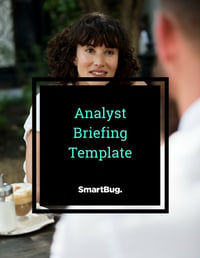
10 B2B Customer Retention Strategies Every SaaS Marketer Should Use
June 5, 2020
Customer churn is painful for any business, but if you run marketing for a SaaS company, losing customers can be downright devastating. On the flip side, a solid B2B customer retention strategy can lead to the growth you need to power ahead.
Wondering what strategies are working out best for SaaS companies? Read on for 10 of the best strategies for B2B customer retention. But first:
Why Do SaaS Businesses Need a B2B Customer Retention Strategy?
Customer churn has the power to rip a hole in any business. In fact, a recent CallMiner study found that avoidable customer churn costs companies $136 billion a year.
Unfortunately, that effect is amplified when your customers are businesses because, chances are, they’ll replace your product with one of your competitors’. That can be devastating if you’re running a SaaS company that relies on customer loyalty or long-term subscriptions to turn a profit.
Still, the best B2B customer retention strategies aren’t just about playing defense. A mediocre customer retention strategy will keep clients from leaving, but a stellar strategy will excite your customer base, fortify customer loyalty, and inspire clients to recommend your product to everyone they know.
Here are 10 strategies to take your B2B customer retention to the next level:
1. Give B2B Clients Engaging Resources
Especially in the SaaS world, customers will have questions about your product. When problems pop up, they want to solve them right away—while they’re experiencing them.
If you want to increase customer retention, give them the resources to solve problems on their own. Start by crafting quality inbound content that answers their potential questions, and give them access to it 24/7.
When you assemble a knowledge base full of webinars, blogs, e-books, white papers, and other useful content, your customers will be able to answer questions on their own time. As they learn more about your product, their bond to your brand will solidify.
2. Educate Customers Right Away
As a SaaS marketer, you know a customer’s experience doesn’t stop at the sale. If your customer starts using your product without knowing how to use it, that’s a recipe for frustration and churn. That’s why education during the onboarding process is at the heart of B2B customer retention.
Give customers video tutorials, shower them with welcome emails, and send out newsletters to keep them engaged. These little educational guides will show them how to get the most out of your product. In turn, they’ll reward you with their loyalty.
3. Use Customer Feedback to Improve
It’s easy to get defensive when customers give constructive feedback, but feedback is invaluable if you want to retain customers. Treat it like gold.
Of course, you should learn everything you can from feedback and use it to improve your efforts, but don’t stop there. Be sure to let your customers know their voices are being heard, and show them how you’re using their suggestions. Showcasing this give-and-take relationship will strengthen your partnership and encourage them to keep working with you.
4. Keep Your Finger on Your Customer’s Pulse
Customer churn doesn’t have to be a surprise. And if you watch for red flags, you can address issues before customers go quietly into the night. Here are some things to watch out for:
- They haven’t logged on to your platform in a while.
- They’re searching your website for cancellation info.
- They’re less engaged or using your product less.
When a customer throws up a red flag, reach out and see how your company can help. A simple follow-up call or email could be enough to pull them back in.
5. Make Business Personal
More and more, customers want to build a connection with the brands they use. And the more they interact with your brand, the more loyal they’ll become.
That’s why excellent customer retention strategies rely on personalized content. Set up loyalty programs, send personalized emails, and keep B2B clients engaged with content that answers their questions. It all adds value to their experience and makes them want to stick with you.
6. Treat Loyal Customers to a Surprise
Especially in B2B relationships, emotions are on high alert. Nobody wants their business to fail, so owners naturally have high expectations for the companies they work with. That’s what makes pleasant surprises so powerful.
Every business relationship is a chance to delight, impress, and deliver outstanding service. By surprising loyal customers with a simple thank you card, small gift, or free upgrade, you’ll remind them how much you value their patronage. They’ll reward you with their ongoing business.
7. Communicate Non-Stop
Communication is the glue that bonds B2B relationships. And a proactive communication strategy can solidify your customer retention plans. Even if your customers are perfectly happy, it’s smart to carve out space on your calendar to connect.
Beyond setting regular meetings, you can beef up communication by sending out newsletters or launching a full-on automated email marketing campaign. All the while, keep track of customer engagement and reach out to them when communication drops off.
For SaaS companies, uninterrupted communication doesn’t just lift retention. It creates new upsell and cross-sell opportunities that feed your business’s bottom line.
8. Build Trust with Social Proof
Trust is at the center of any relationship—and that goes for B2B partnerships as well. That’s why some of the best SaaS customer retention strategies out there rely on social proof.
By sharing testimonials, case studies, and customer stories with your clients, you can show them new ways your product can help them. At the same time, don’t hesitate to reach out to happy clients for a quote or interview about their experience with your company. This will remind them of everything you’re doing for them, and it will help them see that they’re an asset to your team.
9. Wring Out Everything You Can from Exit Interviews
It can be heart-wrenching when a customer ultimately cuts the cord, but that’s no reason to skimp on exit interviews. Exit interviews are a chance to crawl into the head of a dissatisfied customer and find those little nuggets of information that will improve your marketing efforts. By learning everything you can from those customers that churn, you can make little tweaks to boost retention.
10. Elevate Experiences with Better Customer Service and UX
B2B customers can’t afford to muddle through poor experiences. If they can’t find a product or solution to their problems right away, there’s a good chance they’ll look somewhere else. In fact, one Accenture survey found poor experiences caused nearly one in two customers to give up on a company’s website and conduct business elsewhere.
That’s why it pays to invest in customer service and your website’s user experience (UX). The more seamless a client’s experience is, the more likely they’ll be to stick with you for the long run.
These retention strategies should help you keep your B2B customers for the long haul, but when it comes to SaaS marketing, they’re just the tip of the iceberg. Check out our Intelligent Inbound® Bootcamp for SaaS Marketers and unlock a free five-week content training session exclusively for SaaS marketers.

About the author
McCoy Worthington is a Copywriter for SmartBug Media. He graduated from Midland University with a B.A. in Journalism and has been writing professionally for more than a decade. As a Copywriter, he creates inbound marketing content for SmartBug’s clients. Read more articles by McCoy Worthington.









